|
Michigan has some of the best wildlife-based recreation opportunities around. This quarterly newsletter will give you updates on the great work going on for wildlife conservation across the state and some tips on how to get involved.
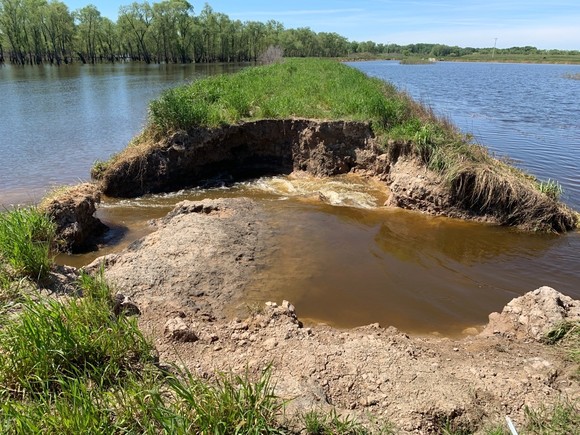 The collapse of the Sandford and Edenville dams last spring sent two lakes' worth of water rushing down the Tittabawassee River, washing over the Shiawassee River State Game Area and associated Shiawassee Flats. Despite the area’s ability to absorb floodwaters, the unexpected volume and speed of the water damaged the managed wetland complex in over 40 areas. With numerous dikes and levees eroded and washed away, Michigan Department of Natural Resources crews and partners worked together to remediate the damage incurred across the area. The photo above shows a levee washed out by floodwaters.
DNR staff from the Wildlife and Forest Resources divisions, with funding provided through the Natural Resources Conservation Service’s Emergency Watershed Protection Program, and volunteers from the Shiawassee Flats Citizens and Hunters Association, collaborated to rebuild and reinforce the damaged dikes and levees, remove woody debris build-up in the Shiawassee River and replant nearby crop fields for migratory waterfowl.
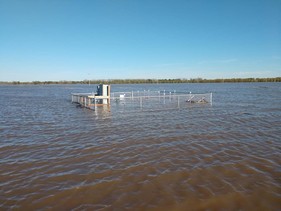
Developed in the 1950’s, this series of dikes, levees and water control structures was installed to provide habitat for migratory waterfowl and wetland species while doubling as a critical water storage area to hold and slowly release floodwaters back into the watershed. The photo shows a water control structure submerged by floodwaters.
Though the area worked as intended to absorb floodwaters after the dam collapses, the structures have now been reinforced to withstand and better manage future flooding events while maintaining high-quality waterfowl habitat and safe areas for outdoor recreation.
|
The project is nearing completion and is expected to be finished next year, pending weather conditions. During construction, the Shiawassee River State Game Area will remain open for public access.
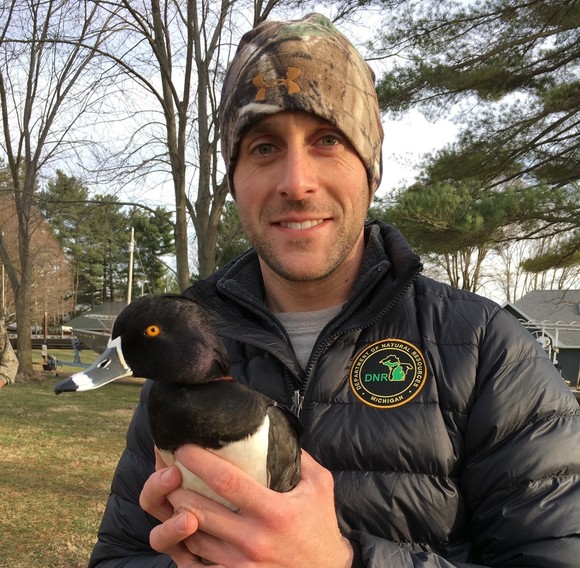 Wildlife biologist Jeremiah Heise has been with the DNR Wildlife Division for almost eight years. Based out of the St. Charles Field Office, Jeremiah covers Bay and Saginaw counties and Wigwam Bay in Arenac County. Jeremiah’s favorite part about working for the Wildlife Division is observing how wildlife populations respond to habitat changes he has implemented, especially waterfowl and wetland species.
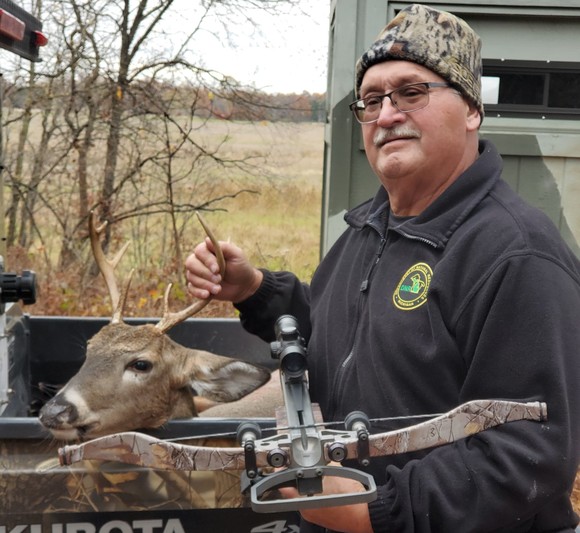 Also at the St. Charles Field Office is wildlife technician Vic Weigold. A 32-year, full-time and three-year seasonal employee, Vic said that the job has always been interesting. Over the course of his career, he has loved his job working outdoors and the challenges of managing the Shiawassee River State Game Area.
If you are interested in learning more about wildlife management or state game areas near you, contact your local wildlife biologist or email DNR-Wildlife@Michigan.gov.
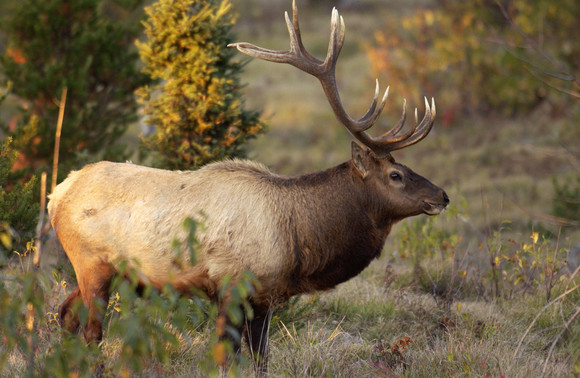 Elk, our featured species this issue, are the second-largest member of the deer family in Michigan. Elk are large herbivores and prefer to graze on grasses and forbs. Michigan's native elk disappeared around 1875. Today's elk herd dates back to 1918, when seven Western animals were released near Wolverine.
Elk viewing
Elk are more active during the early fall breeding season, creating the perfect time to view the wild herd. Grab your binoculars or camera and plan your route through the 13 elk viewing locations in northeast Michigan.
Throughout September and October, elk will gather in forest openings at dawn and dusk to feed and look for potential mates. Keep your eyes peeled for elk moving through the open fields and listen for the bugle of a bull elk.
The Michigan elk herd can only be found in areas throughout Otsego, Montmorency, Presque Isle and Cheboygan counties. There are 13 designated elk viewing areas that can be accessed by roads throughout the Pigeon River Country State Forest near Gaylord.
Elk viewing ►
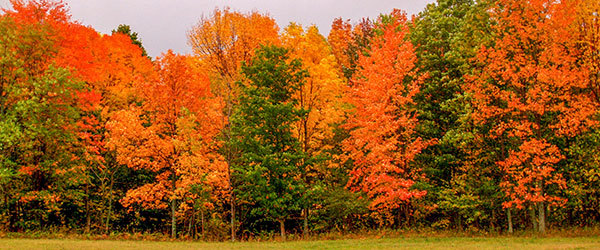 The natural scenery in October is a dreamscape of oranges, reds, yellows, maroons and lasting evergreens. Enjoy the mosaic of autumn colors while exploring your nearby public lands.
Take a hike along winding trails through the Holly State Recreation Area or bring your binoculars to the Maple River State Game Area to observe the fall migration. Listen to the gurgle of the Betsie River at the Betsie River State Game Refuge or drive farther north to watch a bald eagle soar above you from the viewing tower at Rainey River Flooding State Wildlife Area.
Fall colors can also be enjoyed while sitting in the stillness of an early-morning hunt. To find areas of publicly accessible hunting lands near you, check out the Mi-HUNT interactive map. This free mapping tool provides approximate boundaries of lands open to public hunting and the habitat types you can expect to find there. To learn more details about a specific area of state land, contact the nearest DNR Customer Service Center.
|